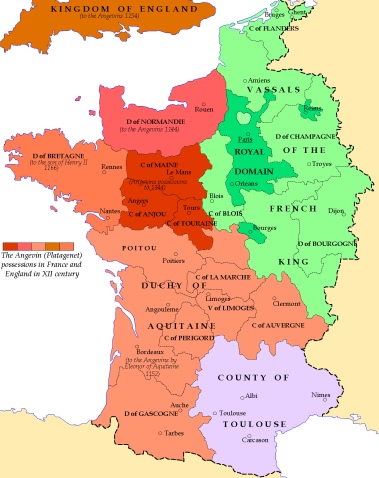by Dr Ruth Salter

836 years ago, on a day much like this (possibly), Henry II was crowned at Westminster Abbey. His predecessor (and uncle), Stephen, had died just under two months earlier, much of his reign having been taken up by ‘The Anarchy’ – a civil war of succession following the death of Henry I between Stephen and his cousin Matilda (Henry II’s mum).


Now, things didn’t stay quite as peaceful for Henry as the century went on. First there was a series of disputes with Thomas Becket of Canterbury (resulting in his martyrdom, 29th December 1170); and then there was the issue of his eldest sons revolting against him (supported by not-so-loving wife Eleanor). These two events tend to dominate the way we look back at Henry’s reign, and with some good reason. But I can forgive Henry some of his mishaps if only because it was under his rule that the (supposed) hand of St James the Greater (one of Christ’s apostles) was returned to Reading Abbey.

The hand had originally come to Reading during Henry I’s reign when Matilda brought it back to England on her return from Germany (following the death of her first husband, Emperor Henry V). It was Henry I who had founded Reading Abbey in 1121, and it was his prestigious new establishment who he trusted with this precious apostolic relic.
Following Henry I’s death, another Henry, this time Henry of Blois, the bishop of Winchester (and brother of Stephen), took the prized relic from the abbey. Henry II’s insurance of its return on his succession was a clear indicator not only of his respect for Reading Abbey, but also of the family ties to the monastery – the place of Henry I’s burial – and thus an emphasis on the connection between himself and his grandfather, and thus the legitimacy of his kingship.
What this meant for Reading Abbey is not recorded directly, but the fact that a collection of miracles relating to the miracle-workings of St James was compiled in the 1190s implies that it was a welcome return for honoured relic. Indeed, despite Reading Abbey housing over 230 saintly relics by the end of the twelfth century, it was only the cult of St James which ever seemed to gain any traction in terms of pilgrimage and miraculous cure.
So what does the miracula for St James’ Reading cult reveal about the saint and his relationship both to Reading Abbey and those who sought his aid? … Now there’s a question, and one which I would usually more than happily wax lyrical about, but this is not the place to go into a long discussion. So here are a few key points:
-
there is only one surviving manuscript copy of the miracles, this was compiled in the early thirteenth century (so pretty much contemporary to the original) and is now held in Gloucester Cathedral Library
-
the miracula was compiled in Latin, but was translated by Prof Brian Kemp for Berkshire Archaeological Journal, and this is accessible online [4]
-
the rubric on the surviving manuscript reads Miracula S. Jacobi (‘The Miracles of St James’), but as Reading only had the hand of St James Prof Kemp used the more specific title of ‘The Miracles of the Hand of St James’ in his translation
-
the miracle collection contains 27 accounts (25 of which can be categorised as miraculous healing of individuals, and two which involve community cures’ from plague)
-
there are multiple occasions in which Henry II is mentioned, and one passing mention of Prince John
The majority of those recorded as cure-seekers in collection are laypeople (4 churchmen to 21 laypersons), and many came from Reading or the surrounding area. Many of the accounts involve the types of cure that could only come about via divine intervention (eight are cured of various forms of ‘illness’, and seven are cured of some form of paralysis).
I find the accounts of the cure-seekers recorded in miracula such as that for St James’ Reading cult absolutely fascinating – which is just as well because they have been key to my research to date! But what is so fascinating about these sources is that they can offer tantalising insights into the lives and health experiences of individuals who would otherwise go unrecorded in other contemporary documentation.
Incidentally, one such story which includes all these elements involves a boy called William and what is particularly apt about this account is that William seeks, and successfully gains, St James’ assistance on Christmas Eve. So here I will end this blog (and save you all from my rambling on this topic), but I will leave you with the said account, as translated by Prof Kemp and we can all thank Henry II for retuning the hand to Reading’s ownership following his coronation on this day in 1154. Enjoy!
*please note that some of the language used in this account is of its time (translated 1970) and would not be the choice of wording used in a translation today*

______________________
Leave a comment